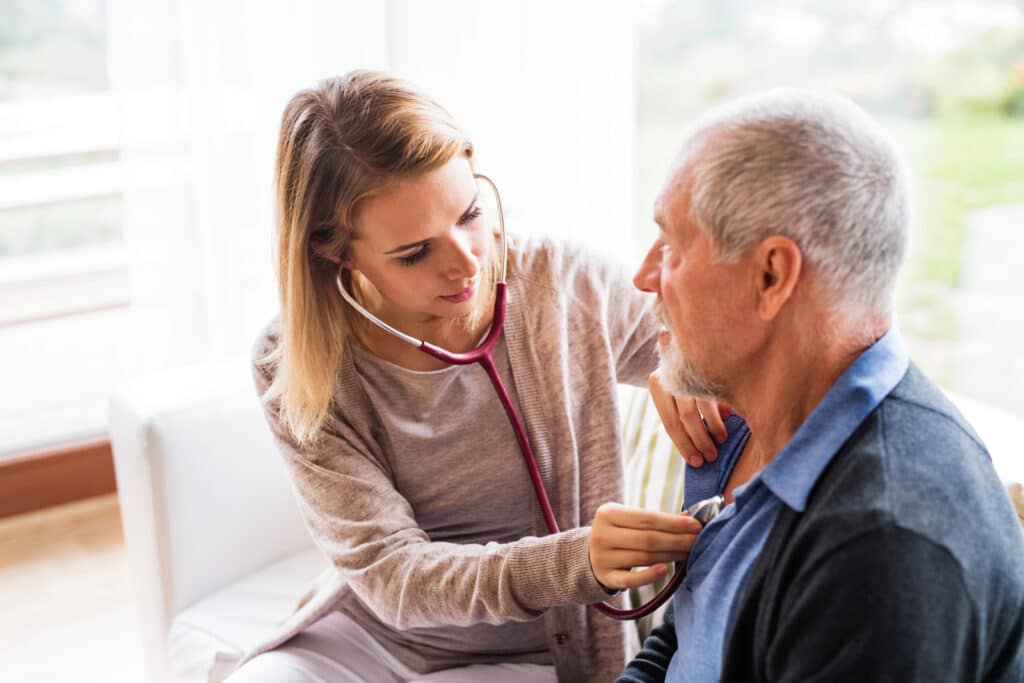Earlier this month we released our Telehealth Patient Survey 2020. The report features thoughts from hundreds ofAustralian patients on telehealth in general practice. In this article we share some of the key findings from the survey.

1. Australians are less likely to see their GP during COVID-19
Almost 1-in-2 people say they are less likely to see their GP during the COVID-19 pandemic. Young patients (18-29 years) are the most likely to avoid GP appointments during COVID-19.
Fifty-seven percent of 18-29 year olds are less likely to see their GP during the pandemic. This dropped slightly to 53% of 30-44 year olds.
Older patients are less phased by coronavirus—only 37% of 45-60 year olds and 27% of over 60 year olds are less likely to see their GP during COVID-19.

2. Awareness of telehealth is low
There has been some early uptake of telehealth, with 1-in-4 patients (25%) having had a telehealth consultation in the past two months. However, 42% of patients still aren’t sure if their GP offers telehealth and 40% don’t know that rebates are available for telehealth consultations.

3. Patients younger than 45 are much more likely to use telehealth
Almost 1-in-3 patients aged 18-29 (29%) have had a telehealth appointment in the last two months. This is closer to 1-in-5 patients over 45 years old.

Interestingly, more than 2-in-5 patients younger than 45 would prefer telehealth to in-person appointments when the COVID-19 restrictions are lifted. This reduces quickly with age with only 1-in-5 patients over the age of 60 preferring telehealth to in-person appointments when the COVID-19 restrictions are lifted.

4. Patients preference for telehealth depends on the type of appointment
Patients are most in favour of telehealth consultations for appointments related to results follow-ups and repeat script/referrals. For consultations with a new doctor, skin checks, and sick children, patients prefer in-person appointments.

When asked if patients thought their last in-person appointment could have been done just as effectively by telehealth, young patients tended to say ‘yes’ while older patients tended to say ‘no’.
Sixty-three percent of 18-29 year olds say their last appointment could have been done just as effectively by telehealth. This dropped to 53% in 30-44 year olds, 48% in 45-60 year olds and 29% in over 60 year olds.

5. Patients who have had a telehealth appointment are much more likely to want to continue using telehealth
Patients who have had a telehealth appointment in the last two months are much more likely to agree that their last in-person appointment could have been done effectively online (68% compared to 48% for patients who haven’t had a telehealth appointment in the last 2 months).


6. Patients have some concerns about telehealth
Around 1-in-3 patients (34%) say they have concerns with telehealth. The most common issues voiced were:
- Internet issues
- Need for physical examination (e.g. taking blood pressure)
- Logistics behind getting scripts to pharmacies
- Communication
- Privacy issues
- Fair pricing
7. Telehealth will play an important role in general practice after COVID-19
A good portion of patients say they would prefer telehealth over in-person consultations once the COVID-19 pandemic restrictions are lifted.
For those patients who have had a telehealth appointment in the past two months, 68% say they would somewhat or strongly agree that they would prefer telehealth over in-person consultations beyond COVID-19. This dropped to 48% in patients who have not had a telehealth appointment in the past two months.


Recommendations
The following 4 recommendations have been drawn from the results of the survey. They aim to provide guidance to clinics who are considering their telehealth capabilities both now—during the pandemic—and when restrictions are lifted.
1. Private/mixed GP clinics should view telehealth as a long-term part of their patient service catalogue
Many patients have been forced to use telehealth during COVID-19. This has accelerated adoption for several appointment types, especially for follow-up appointments and less acute presentations. Clinics should also consider telehealth as a longer term part of their overall service as a significant percentage of patients have indicated preference for telehealth once the pandemic restrictions are lifted. This is particularly true for results follow-up appointments, repeat prescriptions, and referrals.
2. Clinics should use online platforms to promote their telehealth capabilities
Currently patient awareness for telehealth is growing in proportion to the frequency of attendance. We encourage clinics to push messaging about their telehealth capabilities within the clinic and also via their website, Facebook page and through SMS broadcasts. Having telehealth options at the top of the appointment options on an online booking platform is also a good way to advertise your clinic’s telehealth offering
3. GPs should promote telehealth to their current patients for follow-ups, results delivery, and repeat scripts and specialist referrals
Clearly, there are certain appointments (eg. vaccinations, physical examinations), which require an in-person consultation. However, there are also specific types of appointments that patients prefer to use telehealth for when seeing their existing GP. These include follow-ups, results delivery, and repeat scripts and specialist referrals. Providing these appointments via telehealth could well become the new normal.
4. People are willing to pay for convenience but good communication will be important when the Medicare rebate is removed
Many patients are happy to pay privately for telehealth appointments. However, it will be important for clinics to proactively communicate changes as the COVID-19 restrictions are lifted.
HotDoc Telehealth
HotDoc Telehealth takes the struggle out of phone and video consultations for patients and doctors by combining everything you need in one easy to use platform. For instance, pre-payments and pre-consult notes are both included.



